
Main Conference Day 2:
Friday 19th May
08.30 – 09.00: Morning Welcome Coffee
09.00 – 09.45: Learning Market Data Anomalies
- Why anomaly data detection is crucial for market risk management
- Techniques: from simple statistics to isolation forest and (variational) autoencoders
- Comparing and reporting outputs
- Operational framework
Abstract
Everyday market risk managers are required to check a huge amount of market data, scenarios and positions used to compute market risk measures. Some data may present anomalous values because of a wide range of reasons, e.g. bugs in the related production processes, sudden and severe market movements, etc. Hence, it is crucial to integrate the daily data quality process with automatic and statistically robust tools able to smartly analyse all the available information and identify possible anomalies (the “needles in the haystack”). To this purpose we combined both simple statistics and machine learning algorithms to build an anomaly detection framework which is general enough to cover different asset classes and data dimensionalities (multiple curves, surfaces and cubes). The results are encouraging but they strongly depend on assumptions and parameters, keeping crucial the human supervision.

Marco Bianchetti:
Head of Internal Model Market Risk, Intesa Sanpaolo
Marco Bianchetti: Head of Internal Model Market Risk, Intesa Sanpaolo
Marco Bianchetti joined the Market Risk Management area of Intesa Marco joined the Financial and Market Risk Management area of Intesa Sanpaolo in 2008. His work covers pricing and risk management of financial instruments across all asset classes, with a focus on new products development, model validation, model risk management, interest rate modelling, funding and counterparty risk, fair and prudent valuation, applications of Quasi Monte Carlo in finance. He is in charge of the global Fair Value Policy of Intesa Sanpaolo group since Nov. 2015. Previously he worked for 8 years in the front office Financial Engineering area of Banca Caboto (now Banca IMI), developing pricing models and applications for interest rate and inflation trading desks. He is adjunct professor of Interest Rate Models at University of Bologna since 2015, and a frequent speaker at international conferences and trainings in quantitative finance. He holds a M.Sc. in theoretical nuclear physics and a Ph.D. in theoretical condensed matter physics.
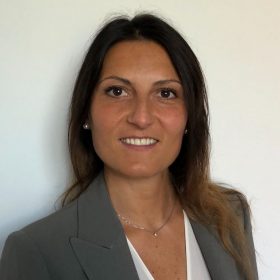
Manola Santilli:
Market Risk Analyst, Intesa Sanpaolo
Manola Santilli: Market Risk Analyst, Intesa Sanpaolo
Manola Santilli joined the Market and Financial Risk Management area of Intesa Sanpaolo in 2015 as a market risk analyst in the Internal Model Market Risk Office. Her work consists in market data management, with focus on market data collection and statistical analysis of historical time series across all asset classes, market risk metrics monitoring, analysis and implementation of FRTB proposal.
Prior to joining Intesa Sanpaolo, she held quantitative analyst role in Société Générale.
She holds a Ph.D. in Statistical Economics, with a thesis on advanced stochastic volatility models for derivative pricing, and a M.Sc. in Economics and Finance.”
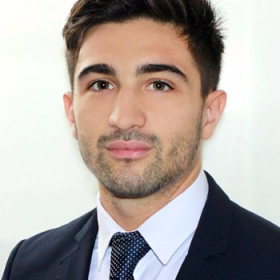
Marco Scaringi:
Quantitative Analyst, Risk Management, Intesa Sanpaolo
Marco Scaringi: Quantitative Analyst, Risk Management, Intesa Sanpaolo
Marco Scaringi joined the Financial and Market Risk Management area of Intesa Sanpaolo in 2017 as quantitative analyst in the Fair Value Policy Office. His work focuses on interest rate models, XVAs, financial bubble analysis and portfolio optimization.
He holds a M.Sc. in theoretical physics from University of Milan, with a thesis on advanced statistical mechanics techniques applied to the description and detection of financial bubbles through optimization heuristics. He also holds a post lauream degree Executive Course of Quantitative Finance from MIP, Graduate School of Business, Polytechnic of Milan, with a thesis concerning interest rate and XVAs modelling.
09.45 – 10.30: Forecasting Inflation with Machine Learning, alt data and Python
Inflation has become a key topic in recent months. In our talk, we discuss how to approach the topic from a machine learning perspective, and how to incorporate alternative data in the process. We will also discuss the tech stack we have used and the various Python libraries involved, as well as how we’ve speeded up the code.
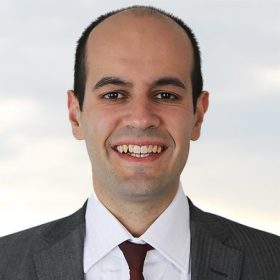
Saeed Amen
Saeed Amen: Turnleaf Analytics / Cuemacro / Visiting Lecturer at QMUL
Saeed has a decade of experience creating and successfully running systematic trading models at Lehman Brothers and Nomura. He is the founder of Cuemacro, Cuemacro is a company focused on understanding macro markets from a quantitative perspective. He is the author of ‘Trading Thalesians – What the ancient world can teach us about trading today’ (Palgrave Macmillan), and graduated with a first class honours master’s degree from Imperial College in Mathematics& Computer Science.
10.30 – 11.00: Morning Break and Networking Opportunities
11.00 – 11.45: Validating Synthetic Data with AI
We discuss the application of calibration methods from Generative Adversarial Neural Nets to the computation of distributional metrics for data samples and in doing so, point the way to the measurement of synthetic data quality.

Jodie Humphreys:
Director, Bank of America
Jodie Humphreys: Director, Bank of America
Jodie leads the Simulation Modelling Program within the Alternative Modelling Group (AMG) at Bank of America. He previously worked in the field of credit derivative pricing and regulatory capital modelling and has also led the development of a number of innovative technical solutions within the bank. Jodie holds a BA and Certificate of Advanced Study in Mathematics from the University of Cambridge and a PhD in Mathematics from University College London. His PhD thesis studied the algebraic properties of lattices in semi-simple Lie groups, a subject with applications to the classification of higher dimensional manifolds.
11.45 – 12.30: Sentiment Investing, with Applications for Alpha and Risk Modelling

Ganchi Zhang:
QIS research, Director, Deutsche Bank
Ganchi Zhang: QIS research, Director, Deutsche Bank

Gianpaolo Tomasi:
QIS research, Director, Deutsche Bank
Gianpaolo Tomasi: QIS research, Director, Deutsche Bank
I currently lead the equity team within the Quantitative Investment Strategies (QIS) Research group. My main focus are long-short and long-only machine learning strategies in equities; I am also involved in the computation of ESG scores and the creation of ESG strategies based on natural language processing.
12.30 – 13.30: Lunch
13.30 – 14.15: Arbitrage-free FX implied volatility by variational inference
We Introduce an approach to obtain no-arbitrage FX implied volatilities from bid and ask of ATM, risk reversal, and butterfly volatilities
- Market convention in FX option market
- Variational inference and Kullback-Leibler divergence
- Conditions for arbitrage-free and correct order in strike rates
- Algorithm
- Numerical examples

Yoshihiro Tawada:
Director: Head of FX-flow Quant Modelling, MUFG Securities EMEA plc
Yoshihiro Tawada: Director: Head of FX-flow Quant Modelling, MUFG Securities EMEA plc
Yoshihiro Tawada is head of FX-flow Quant modelling at MUFG Securities EMEA plc. He contributes to the Cutting Edge section of Risk magazine regarding application of machine learning to finance. He is a CFA Charterholder, and received a master’s degree in engineering from the University of Tokyo.
14.15 – 15.00: Robust Log-normal Stochastic Volatility for Interest Rate Dynamics
Abstract: We present a log-normal SV model for the dynamics of interest rates based on single-factor Cheyette model. We assume non-zero correlation between the dynamics of the model state variable and the log-normal SV driver for modelling implied volatility skews observed in fixed-income markets. We show that the proposed model is consistent with historical evolution of rates and implied volatilities. We present a closed-form solution for swaptions valuation and show that our model is able to fit accurately observed market implied volatilities.
This talk is based on joint work with Artur Sepp.

Parviz Rakhmonov:
Vice President, Quantitative Analyst, Citibank
Parviz Rakhmonov: Vice President, Quantitative Analyst, Citibank
Parviz Rakhmonov is a Quantitative Analyst at Citi, London since 2016. Prior to moving to quantitative finance, Parviz spent two years as a post-doctoral researcher at the Faculty of Mechanics and Mathematics in Lomonosov Moscow State University, focusing on research in Analytic Number Theory, teaching courses in Calculus and Number Theory. He holds a PhD and MSc in Mathematics from the Lomonosov Moscow State University.
15.00 – 15.15: Afternoon Break and Networking Opportunities
15.15 – 16.00 What the Pandemic, war in Ukraine and the return of inflation tell you – a contrarian look at ESG
- Geophysical basis of climate and adverse weather events: what do reinsurers think?
- The energy mix and other resource intensive industries.
- Two years after “Peak ESG”, what remains? ESG versus free markets.
- Is the financial industry the right tool to craft environmental policy?
- How to invest your portfolio through a greenwash boom and bust?
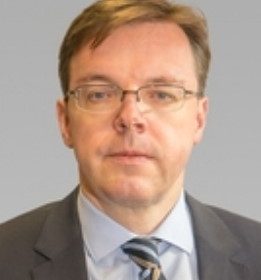
Erik Vynckier:
Interim Chief Executive, Foresters Friendly Society
Erik Vynckier: Interim Chief Executive, Foresters Friendly Society
Erik Vynckier is board member of Foresters Friendly Society and chair of the Investment Committee, following a career in investment banking, insurance, asset management and the petrochemical industry. He has been Chief Investment Officer and Chief Executive Officer and frequently consults in investment management, quantitative risk management and derivatives.
He co-founded EU initiatives on high performance computing and big data in finance and co-authored “High-Performance Computing in Finance” and “Tercentenary Essays on the Philosophy and Science of Leibniz”. Erik graduated as MBA at London Business School and as chemical engineer at Universiteit Gent.
08.30 – 09.00: Morning Welcome Coffee
09.00 – 09.45: Leveraging Large Language Models to extract ESG information in practice

Robert Dargavel Smith:
Lead Data Scientist, Clarity AI
Robert Dargavel Smith: Lead Data Scientist, Clarity AI
“Robert Smith is a Lead Data Scientist at Clarity AI. Previously he was Head of Data Science at IHS Markit (now part of S&P Global). He has worked in capital markets for over 25 years in Banco Santander and ABN Amro, holding various positions from Head of CVA Desk to Global Head of Quantitative Analysis.”
09.45 – 10.30: Slow vs fast ESG scores: do they measure the same thing?
- What are the similarities and differences between “slow” ESG scores (of Sustainalytics, Moody’s and such) and “fast”, media-based ESG data, obtained with AI and NLP?
- What can we learn from this comparison?
- What are financial consequences of using fast ESG information?
- Can fast ESG data help us design successful trading and investment strategies?

Svetlana Borovkova:
Head of Quantitative Modelling, Probability & Partners. Associate Prof, Vrije Universiteit Amsterdam
Svetlana Borovkova: Head of Quantitative Modelling, Probability & Partners and Associate Professor, Vrije Universiteit Amsterdam
Dr Svetlana Borovkova is the partner and Head of Quant Modelling of risk management consulting firm Probability and Partners and an Associate Professor of Quantitative Finance and Risk Management at the Vrije Universiteit Amsterdam. She is the author of over 60 academic and professional publications and a frequent speaker at conferences such as RiskMinds and QuantMinds. Her work encompasses a wide range of topics, ranging from derivatives pricing and risk modelling to sentiment analysis for quant investing and machine learning in quant finance. Find her work at SSRN and her columns on various finance topics in Financial Investigator.
10.30 – 11.00: Morning Break and Networking Opportunities
11.00 – 11.45: Fundamental ratios as predictors of ESG scores: a machine learning approach

Rita Laura D’Ecclesia:
Professor of Quantitative Finance. Sapienza University of Rome, Italy
Rita Laura D’Ecclesia: Professor of Quantitative Finance. Sapienza University of Rome, Italy
11.45 – 12.30: CO2eVA: Pricing Carbon Externalities Transition

Chris Kenyon:
Director: Head of XVA Quant Modelling, MUFG Securities EMEA plc
Chris Kenyon: Director: Head of XVA Quant Modelling, MUFG Securities EMEA plc
Dr Chris Kenyon is head of XVA Quant Modelling at MUFG Securities EMEA plc. Previously he was Head of XVA Quantitative Research at Lloyds Banking Group, head quant for Counterparty Credit Risk at Credit Suisse, and (post-crisis) Head of Structured Credit Valuation at DEPFA Bank Plc. He is active in XVA research, introducing KVA and MVA, with Andrew Green in 2014-15, their accounting treatment in 2016-17, as well as double-semi-replication and behavioural effects on XVA. He contributes to the Cutting Edge section of Risk magazine (most-cited author in 2016; 5th most-published author 1988-present in 2017), co-edited “Landmarks in XVA” (Risk 2016). He has a Ph.D. from Cambridge University and is an author of the open source software QuantLib.
12.30 – 13.30: Lunch
13.30 – 14.15: Carbon-Equivalence Principle in Action
- Carbon-equivalence principle
- Policy-impacted climate finance
- Marginal financial net-zero
- Minimization of carbon costs
- Green hedge business
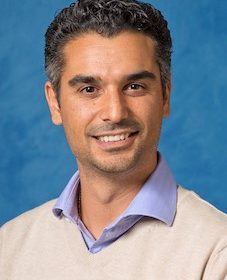
Andrea Macrina:
Professor of Mathematics, University College London (UCL)
Andrea Macrina: Professor of Mathematics, University College London (UCL)
Andrea Macrina is Professor of Mathematics and the Director of the Financial Mathematics MSc Programme in the Department of Mathematics, University College London. His current research programme includes projects in climate finance, the development of quantile processes with applications in insurance and finance, and stochastic interpolation. Dr Macrina is Adjunct Professor at the University of Cape Town in the African Institute of Financial Markets and Risk Management where in 2014 he co-founded the Financial Mathematics Team Challenge (FMTC). Andrea is a recipient of the Fields Research Fellowship awarded by The Fields Institute for Research in Mathematical Sciences. He holds a PhD in Mathematics from King’s College, University of London, and an MSc in Physics from the University of Bern, Switzerland. Personal website: https://amacrina.wixsite.com/macrina
14.15 – 15.00: Climate Risk Modelling
- Mapping physical risk and transition risks
- Earning at risks
- Scenario analysis
- Climate VaR
- Practical examples
15.00 – 15.15: Afternoon Break and Networking Opportunities
15.15 – 16.00 What the Pandemic, war in Ukraine and the return of inflation tell you – a contrarian look at ESG
- Geophysical basis of climate and adverse weather events: what do reinsurers think?
- The energy mix and other resource intensive industries.
- Two years after “Peak ESG”, what remains? ESG versus free markets.
- Is the financial industry the right tool to craft environmental policy?
- How to invest your portfolio through a greenwash boom and bust?

Erik Vynckier:
Interim Chief Executive, Foresters Friendly Society
Erik Vynckier: Interim Chief Executive, Foresters Friendly Society
Erik Vynckier is board member of Foresters Friendly Society and chair of the Investment Committee, following a career in investment banking, insurance, asset management and the petrochemical industry. He has been Chief Investment Officer and Chief Executive Officer and frequently consults in investment management, quantitative risk management and derivatives.
He co-founded EU initiatives on high performance computing and big data in finance and co-authored “High-Performance Computing in Finance” and “Tercentenary Essays on the Philosophy and Science of Leibniz”. Erik graduated as MBA at London Business School and as chemical engineer at Universiteit Gent.
